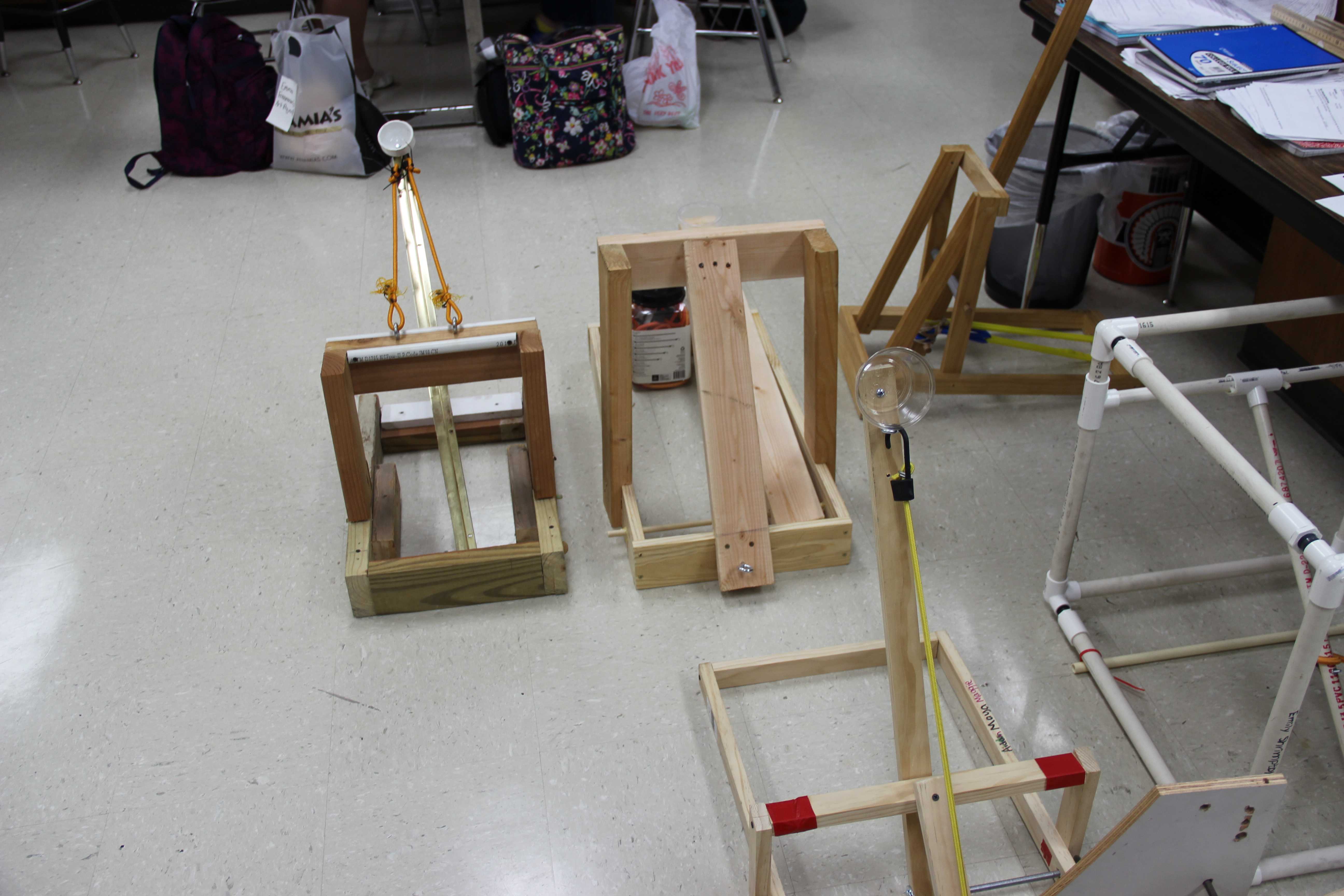
What happened to the ball? Did it fly? Did it go high or low? Where did it land?. Place a cotton ball in the launching cup, push the cup down just a little bit and let go. Clear about a meter of open space for the launched object (the missile) to fly and land. Put your catapult in an open area with a sturdy, flat surface such as a table or an open space on a hard floor. Put your catapult on its base, locate the end of the launching stick that sticks up and glue the bottle cap there so it forms a small cup to hold the missile. Now the launching stick and the base form a V shape lying on its side with the stack of sticks in the middle. If it were not for the stack of sticks in between, the launching stick would fall flat on top of the base. Next, add the base by attaching a stick to one end of the launching stick with a rubber band. If you cross it this way, the sticks will stay nicely perpendicular. You can do this with one or two rubber bands that are crossed in an X over the sticks. To add the launching stick take one stick and attach it perpendicular to the stack you just made, around the middle, so you get a cross shape. You will anchor the launching stick to this stack, as described in the next step. Secure these sticks together by wrapping rubber bands around both ends of the stack. Take six craft sticks, stack them one on top of the other. Make sure any objects you launch are soft and light so as not to harm anyone or cause any damage to objects around you. Shooting hard objects or using other homemade catapults can be dangerous. Note: The simple catapult described in this project is safe when used with a cotton ball. It should be a sturdy, flat surface such as a table or floor.) Small open area (One square meter will do. Cotton ball (If you do not have any available, you can make a small ball by crumbling some paper.). Plastic bottle cap to hold a cotton ball. But would the amount of energy with which you're loading your device factor in as well? Try this activity to find out! The position of the launching device when the missile becomes airborne is an important parameter of aiming. When you let go, this stored energy is released, converted into energy of motion and transferred to the missile (the launched object), which then flies through the air. The catapult you are about to make uses elastic potential energy stored in a wooden stick as you bend it. This energy is stored in the launching device as potential, or stored, energy. When you prepare the catapult to launch, you add energy to it. Can you predict where your missile will land?Ī catapult works because energy can be converted from one type to another and transferred from one object to another. #Catapult physics how to#
Even Greeks and Romans used catapults about 2,000 years ago! These simple machines are quite handy, as long as you know how to aim them! In this science activity you will try your hand at catapult technology. And medieval knights used them centuries earlier for taking down massive castle walls. Throw a baseball with your hand cupped like a spoon and then throw it with your fingers spread to get max grip and it's easy to see which is more accurate.Catapults were mighty handy for pirates in the golden age of piracy (during the 17th century). The sling adds to that by extending the launch arm without increasing its weight by much while also improving accuracy. It's just taking advantage of fulcrum points and counter weights to do so.

Think of it sort of like the tip of a bull whip can reach 900 mph, but your hand can not. When the load is dropped, the launch arm comes around at a much faster velocity due to its increased length.

The arm is off-center on an axle with the longer "launch" end (with or without a sling) holding the projectile and the shorter "load" end (locked in the "up" position before launch) loaded with something much heavier. Trebuchets get their energy from gravity. Catapults get energy from tension (usually torsion) and the arm hits a stop near the top of its arc to release the projectile.

The sling is not what makes it a trebuchet instead of a catapult.







 0 kommentar(er)
0 kommentar(er)
